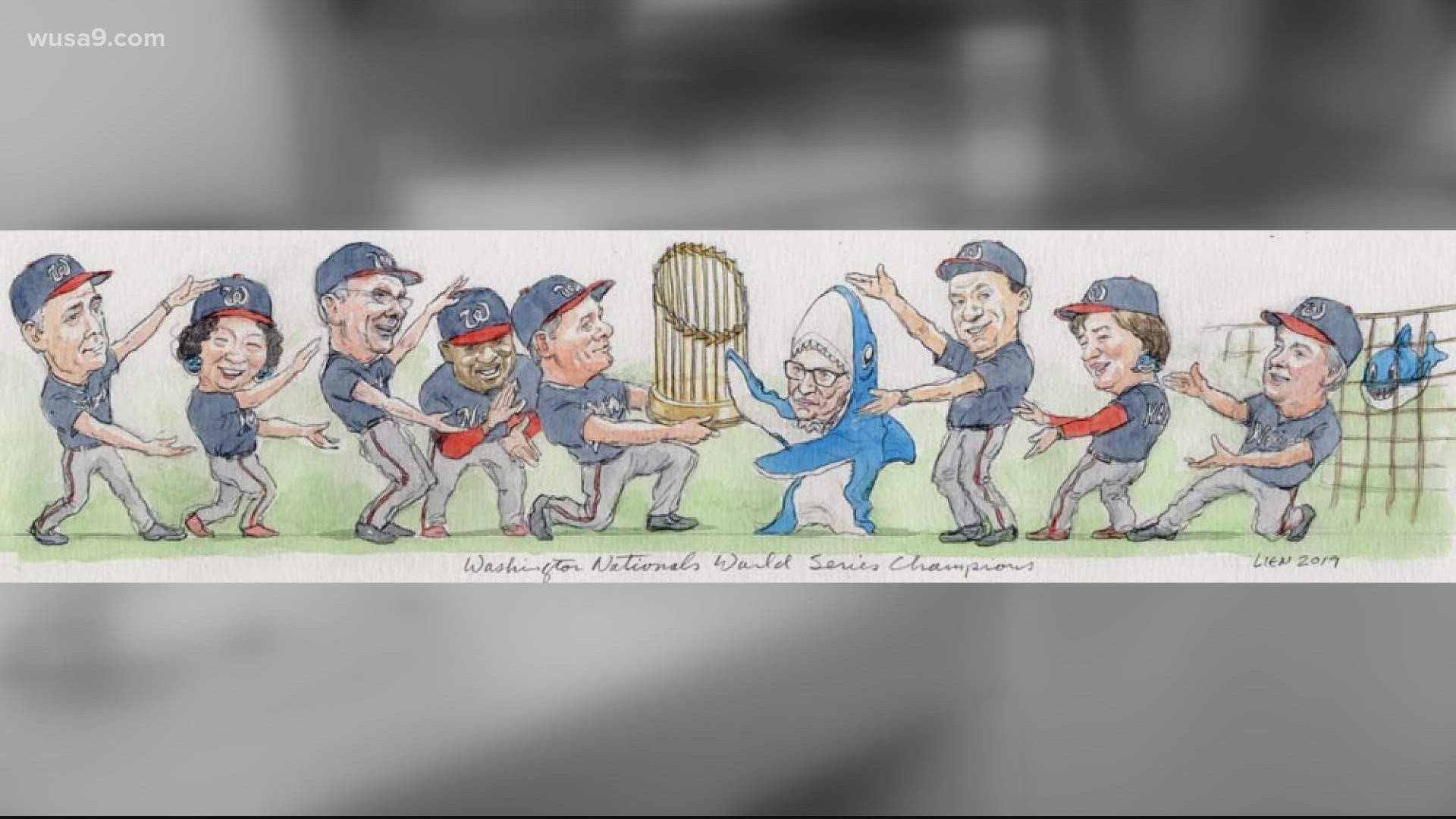BALTIMORE — Art Lien always figured his retirement would coincide with the introduction of cameras inside federal courts. Lawmakers have discussed the topic for years without resolution.
So, as it stands currently, there are only two ways for someone to see inside the U.S. Supreme Court: attend an argument in person or be transported there through the work of courtroom sketch artists like Lien.
"It's a dying art," muses the aptly named Art Lien who has sketched arguments before the country's highest court since 1977.
Lien calls back to a time earlier on in his career when any given high-profile federal court case would be crowded with sketch artists. One for each local station providing coverage and additional artists if the national networks were covering the case.
Now, as networks and local stations have fewer resources and often engage in cooperative video agreements, there's little need for multiple sketch artists covering a trial.
Lien got his start in news and court sketching covering the corruption trial of former Maryland Governor Marvin Mandell in 1975.
It didn't go well for Lien. At least, at first.
Lien says he was let go for doing a poor job on the first day of the trial. He asked for a second chance and was able to redeem himself.
Following that trial, Lien contacted the three major networks in Washington to seek continued employment and latched on with CBS in the early years. He spoke of his time with mentor Howard Brody who Lien referred to as the 'Grandfather' of sketch artists.
"I'm not the kind of guy who can work at a desk. I've always gone out and covered something in person. I like the hustle and bustle," Lien said.
After forty-five years of Supreme Court cases and three impeachment trials in the US Senate, Lien acknowledges his front-row seat to history.
"I have to pinch myself sometimes. And I kind of just fell into it," he said. "It was dumb luck. I had no idea."
One part of retirement he relishes is that the long days of commuting to work from his home in Baltimore are winding down.
"Last year during the pandemic I actually worked from home. Covered the Supreme Court from home," said Lien. "It was kind of nice not to have to commute. Having gone back and being reminded of what the commute is like, that's when I decided I would retire."
Like most people, Lien had to make a hard pivot during the pandemic. How was he supposed to sketch Supreme Court arguments that were taking place over the phone?
Turns out, he asked the attorneys who were delivering those arguments to send in pictures of them making arguments to their speakerphones. Lien ended up sketching memorable moments -- from one attorney who delivered his telephonic arguments in a courtroom with the justice's photos arranged as they would be sitting in the court's chamber -- to another attorney sitting behind a disheveled desk wearing a hoodie.
In the early days of his Supreme Court coverage, Lien recalls a time when Justices would freely roam the halls and dine with their clerks at the cafeteria. Security, he says, is one of the things that has changed the most over the years.
He has had a few moments where Justices would proffer opinions on their likenesses as depicted by Lien. Justice Kennedy, for one, complimented him on his work. But not everyone was a fan.
"Early on when Justice Brennan was on the Court, Brennan came up to me and said, 'how come you always make me look like a leprechaun? Of course, the funny thing is, he kind of did look like a leprechaun," said Lien with a chuckle.
We met with Lien at his home in Baltimore for a retrospective look at his career. He was sketching as we talked, working on an intricate drawing of the Supreme Court interior.
"I'm really good at doing these wide shots and I enjoy doing them. I like the architecture," he said. "When I go up to the courtroom I only take pencil and paper. It's when I get back down after the arguments that I add in color. Just simple watercolor. It's very fast."
With so much detail in one sketch, I was curious as to how he could remember all the vivid details of what he wanted to capture. And sometimes, he didn't.
"I give all the justices red ties whether they're wearing red ties or not," he said.
Working initially for CBS, then NBC news and now SCOTUSblog, Lien was accustomed to the rigors of television deadline pressures.
"The joke is before anything happens the producer is like, 'do you have anything we can shoot yet?'"
As for the 'glamourous' life of a journalist, think again. The luster of that front-row seat to history can wear off pretty quick.
"It's a hard job. I don't think people, even other artists, realize how tough it is," Lien said. "There's always someone in front of you getting in the way and you're working in less than ideal conditions all the time."
Very few arguments remain for the Court's current term and the time is winding down for Lien who's coming to terms with the next chapter in his life.
"I've been wondering if I will miss it, but we'll see."

